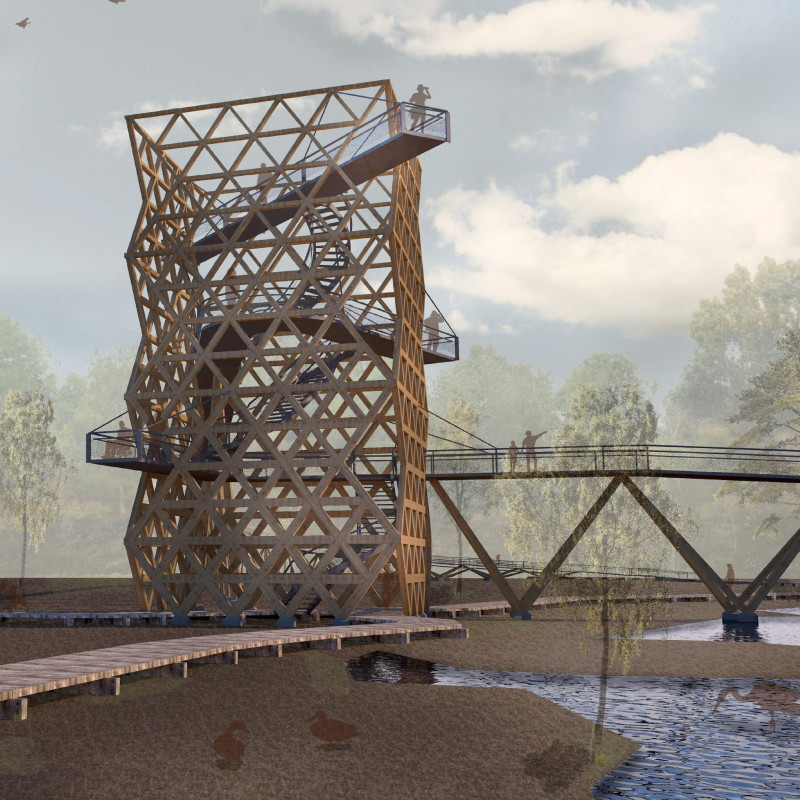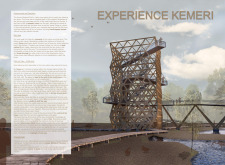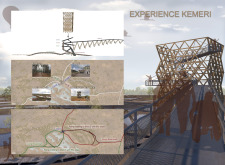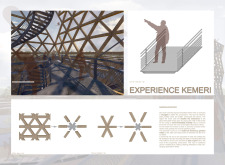5 key facts about this project
The observation tower in Kemeri National Park, Latvia, is designed to enhance the experience of visitors while maintaining harmony with the surrounding landscape. Located among tall pine trees, the tower provides a vantage point for watching wildlife, including species such as black storks, moose, foxes, and wolves. The design centers on creating a multi-level platform structure that encourages exploration and allows for a close interaction with nature.
Design Concept
The concept revolves around a tower with multiple observation decks. These decks are arranged at different heights, offering wide views of the natural environment. This layout encourages visitors to engage with both the park and its inhabitants. As people ascend the tower, they encounter new perspectives that highlight the diversity of the landscape.
Accessibility Features
Accessibility is a key focus of the design. It includes ramps that lead to the tower, connecting it to existing boardwalks in the park. These ramps have been designed with varying slopes, so they can accommodate visitors of all abilities. This thoughtful decision improves the experience for everyone, emphasizing the importance of inclusivity in public spaces.
Material Selection
Wood and steel are the main materials used in the tower. Wood provides a warm and natural look that fits well within the park’s environment. Steel is used to ensure the strength needed for the observation areas. Together, these materials create a structure that is both functional and suitable for its location.
Narrative Experience
The tower also creates a journey for visitors. Walking through the park and ascending the tower offers a chance to engage with the environment from different heights. This experience draws attention to the surrounding nature while transforming the tower into more than just a lookout point. It becomes a place for discovery and appreciation.
The observation platforms reach out from the tower, giving visitors a feeling of being in the treetops. This design feature deepens the connection to the landscape and invites visitors to pause and take in the views.






















































